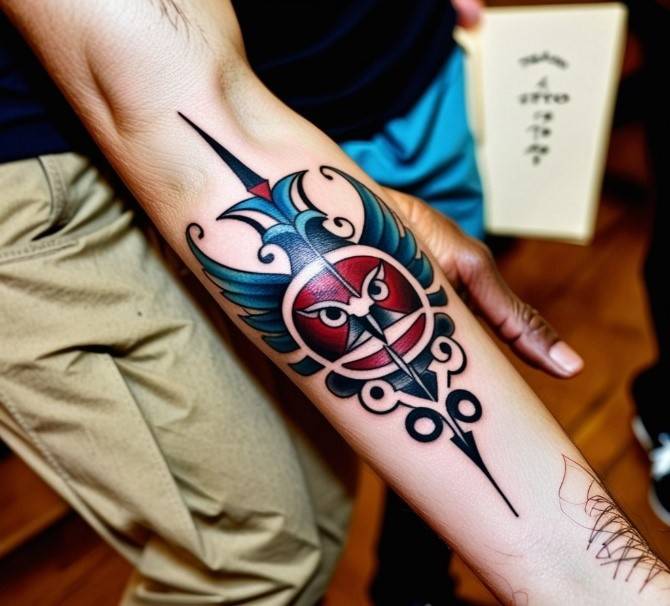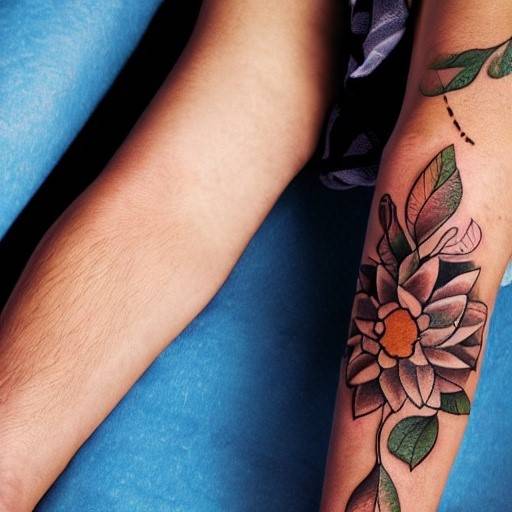Tattoos are permanent, but minds can change. A tattoo you loved when you first got it doesn’t look as good to you ten years later. But while tattoos may be permanent, there are technologies available today to break them down. Before you dive into the world of tattoo removal, let us understand why it can be a challenging process.
Tattoos are designed to be permanent, with the ink injected into the deeper layers of the skin. This makes them resistant to the body’s natural shedding of skin cells, which is why they last so long. Removing a tattoo involves breaking down the ink particles so that the body can eliminate them. However, this process is not always straightforward and can vary depending on several factors, including the size, colour, and age of the tattoo, as well as the type of ink used.

When considering tattoo removal options, you must weigh the benefits against the potential risks and side effects. Some factors to consider include the cost of the treatment, the expected number of sessions required, and the likelihood of scarring or skin discolouration. Additionally, it’s crucial to choose a qualified and experienced professional to perform the procedure to minimize the risk of complications.
In terms of what to expect during tattoo removal, it’s important to understand that it is a gradual process that may require multiple sessions spaced several weeks apart. The exact number of sessions needed will depend on the size and complexity of the tattoo, as well as your skin type and how well you respond to treatment. After each session, you may experience redness, which should resolve within a few weeks. The best way to avoid this is to be completely sure of the tattoo before getting inked to avoid regrets. Do not get a tattoo because your friends are getting one or some other spur-of-the-moment reason.
Now, let’s delve into the different options available for tattoo removal:
1. Laser Tattoo Removal:
Laser tattoo removal is a popular method for removing tattoos. It works by using high-intensity light beams (q switched, nanosecond, or picosecond lasers) to break down the tattoo ink into smaller particles, which are then gradually eliminated by the body’s immune system. The procedure is performed using a specialized laser that targets specific colours of ink.
During the procedure, the laser is passed over the tattooed area, delivering short bursts of light. The sensation is often described as similar to being snapped with a rubber band. The number of sessions required depends on various factors, including the size, colour, location and age of the tattoo, as well as the individual’s skin type. Laser tattoo removal is effective in fading or removing tattoos, and it is less invasive than surgical methods. It also typically results in less scarring and shorter recovery times compared to surgical removal.
While laser tattoo removal is generally safe, there are some risks, including the possibility of scarring, skin discolouration, and incomplete removal of the tattoo. These risks can be minimized by going to a qualified medical provider for your procedure.

2. Surgical Tattoo Removal:
Surgical tattoo removal involves cutting out the tattooed skin and stitching the surrounding skin back together. It is typically used for small tattoos or tattoos that are resistant to other removal methods. During surgical removal, the area is numbed with a local anaesthetic, and the tattooed skin is surgically removed. The surrounding skin is then stitched closed. This procedure is usually performed in a dermatologist’s office or a surgical centre.
Surgical removal can be effective for completely removing tattoos, particularly smaller ones. It can also be a faster method compared to other removal options. Surgical removal carries risks, including scarring, infection, and changes in skin texture. It may also be more expensive and require a longer recovery time compared to other removal methods.
3. Intense Pulsed Light (IPL) Therapy:
Similar to laser therapy, IPL therapy uses pulses of light to break down the ink particles. It is less painful than laser therapy but may require more sessions to achieve the desired results. IPL therapy is often described as feeling like a warm sensation or a light snap on the skin, similar to a rubber band being snapped against the skin. Most people find the treatment tolerable and relatively painless, but the sensation can vary depending on the individual’s pain tolerance and the area being treated.
To minimize discomfort, a topical anaesthetic may be applied to the skin before the procedure. After the treatment, some redness and mild swelling may occur, but this usually subsides within a few hours to a few days.
Cost of laser treatment
Removing a tattoo is more expensive than getting one. This has entirely to do with the cost of the laser machine. While a tattoo machine costs only a few thousand rupees, a laser machine used for removal can cost around 40 lakhs. This significant difference in equipment cost is a key factor in the overall cost of tattoo removal treatments.
Overall, the choice of tattoo removal method depends on various factors, including the size, colour, and age of the tattoo, as well as the individual’s skin type and desired outcome. Consulting with a qualified professional can help you decide which method suits your tattoo best. The Venkat Centre also provides these services. Please go through our website for more details.
